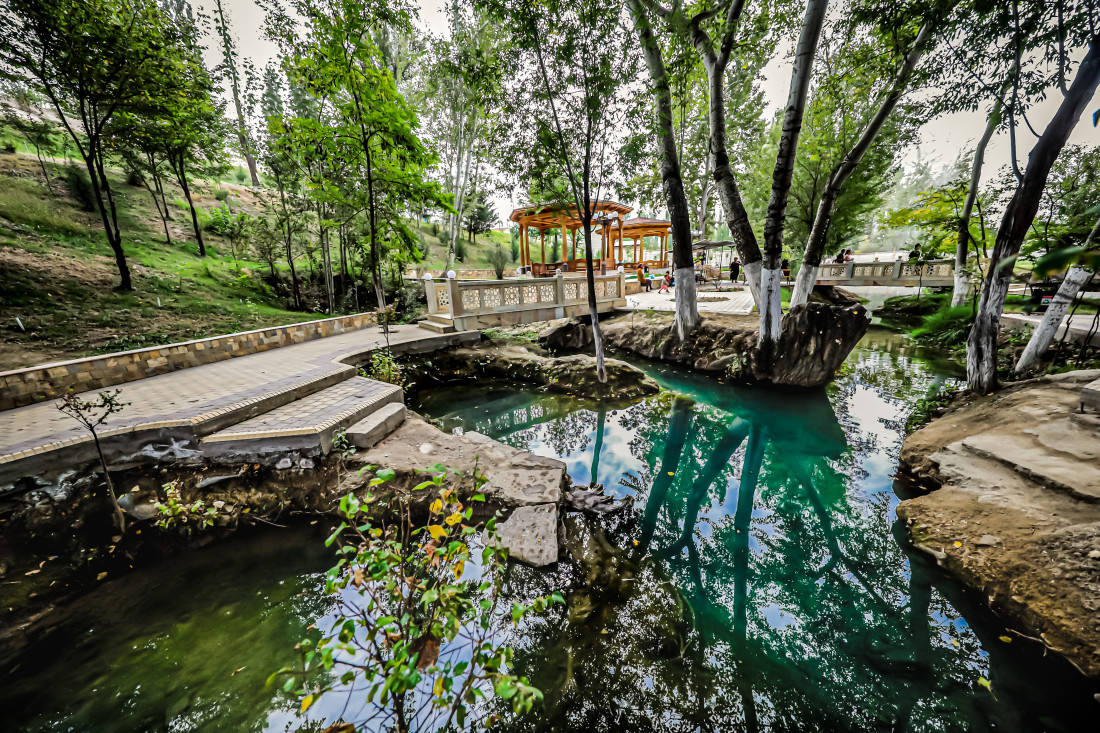Namangan region has been famous for its rich history and holy springs since ancient times. The beginning of all holy sources is considered to be "Bibi Ona". Here is the archaeological site "Bibionamazor", which belongs to the Late Bronze Age. The monument is located in the Chust district and covers an area of 4.5 hectares. On the territory of the ancient monument there is a holy spring "Bibi Ona-Kainar Bulok". Numerous finds were found near the source, confirming the ancient past of the monument.
From a historical point of view, Chust has always attracted the attention of historians and archaeologists. The emergence of the Chust culture dates back to the 2nd millennium BC. "Bibionamazor" is located on a hill in a flowering valley, near the river Gavasay. Since the middle of the 20th century, the area has been explored by archaeologists Vorontsov M.E., Sprishevsky V.I., Zadneprovsky Yu.A. Under the leadership of academician Akhmadali Askarov, more than 500 square meters of the monument were studied. Research helped to establish the time of its appearance - X-VIII centuries BC. It is believed that ancient agriculture flourished near the source, and it is for this reason that this area has been considered sacred since ancient times.

The holy spring "Bibi Ona" is the beginning of all springs of Chust. According to legend, Bibi Ona was a princess, and the water itself, named after her, has healing properties. People from all over the country come to the spring to cure eye diseases and even infertility. Fellow villagers say that if you plunge into the water completely, you can cleanse yourself of bad thoughts and find peace.
Another shrine of Bibi naim It is located in the Chartak region. There is a pond with crystal clear water, at the bottom of which even grains of sand are visible. In the outlines of the reservoir, you can see a giant palm. The reservoir is located at the foot of the tomb of Bibi Naim On - the mother of the holy Sultan Uvays Karani. This historical monument dates back to the XII-XIII centuries. More recently, a reconstruction was carried out on the territory of the shrine. The territory was landscaped, all conditions were created for holding pilgrimage ceremonies.
Working hours: 9:00 AM - 6:00 PM, Mon-Fri
For any questions
ПОЛЬЗОВАТЕЛЬСКОЕ СОГЛАШЕНИЕ
1. Определение
Настоящее Пользовательское соглашение (далее — Соглашение) является Публичной офертой в соответствии со статьёй 367 Гражданского кодекса Республики Узбекистан от 21.12.1995 (https://lex.uz/ru/docs/111181#162763) и регулирует порядок использования материалов и Сервисов сайта Государственного унитарного предприятия «Национальный PR-центр» (далее — Предприятие), размещённого на веб-сайте и поддоменах Национального Туристического Информационного Центра: https://uzbekistan.travel/ (далее — Сайт).
Посетитель и (или) Пользователь подтверждает, что ознакомлен, полностью и безоговорочно принимает все условия настоящего Соглашения и обязуется их соблюдать.
Использование Сайта Пользователем означает полное принятие данного Соглашения «как есть» в форме акцепта.
Соглашение вступает в силу с момента посещения любой страницы Сайта и (или) регистрации на Сайте и действует бессрочно во время пользования Сервисами Сайта.
Настоящее Соглашение обязательно для исполнения всеми Посетителями и Пользователями без каких-либо изъятий и дополнительных согласований.
Пользователь обязуется самостоятельно проверять актуальную редакцию Соглашения на Сайте перед использованием Сервисов.
2. Предмет Соглашения
Предметом настоящего Соглашения являются правила использования материалов Сайта и предоставление Посетителю и (или) Пользователю возможности использования Сервисов Сайта.
Предприятие является правообладателем исключительных прав на Сайт в целом и на его составные части, включая все виды контента: логотипы, товарные знаки, тексты, статьи, аннотации, иллюстрации, фотографии, графику, аудио- и видеофайлы, пользовательские интерфейсы, дизайн, структуру, программы, базы данных.
Я прочитал(а) и соглашаюсь с условиями использования сайта и политикой конфиденциальности.
